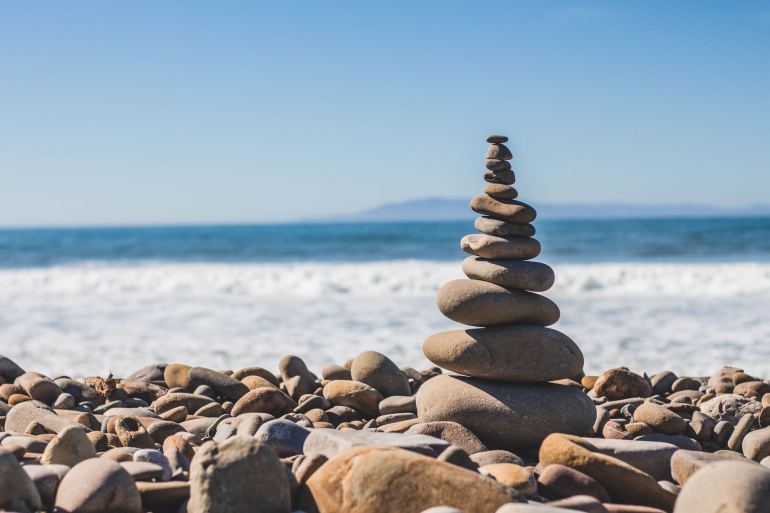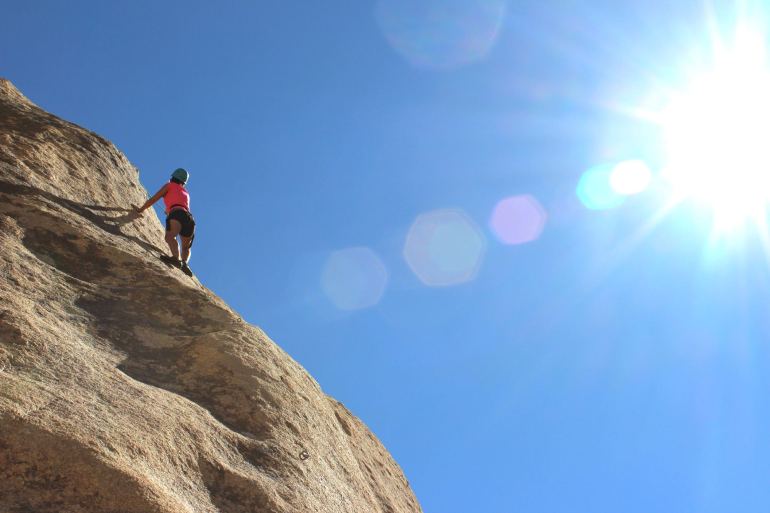Optimize Your Life Using the Science Behind Building Habits

You’ve been tracking your day and your time management skills are improving… now what? It’s time to make this new you stick, with scientifically proven methods to build new habits.
Building and maintaining habits is hard. In fact, it’s so hard that Stephen Covey’s book on creating them is the number one bestseller in self-help on Amazon. It seems like the world badly wants more willpower — to get fit, rich, and more productive. That building habits is hard is the bad news, but the good news is that you no longer have to go off guesswork when trying to develop them. If you’re feeling overwhelmed by our last article on creating routines that work to structure your day, and be more productive, then you need to know the science behind creating habits.
For decades, researchers have been looking into habits, willpower, and productivity. We can finally say that there are techniques that are scientifically proven to build new habits. We have information at our fingertips that makes this a simpler and less painful process than ever before. But what’s myth, and what’s tried and tested? Don’t just be another statistic of someone who failed to keep your new routines: turn them into habits that will last a lifetime.

Plan Your Habit Building Around Hits of Dopamine
A common misconception of habit building is that it revolves solely around repetition. “If I do XYZ for 30 days, it will become a habit…”, no matter how unpleasant that new habit is. The reality, though, is that if you’re forcing yourself to do something purely to try and turn it into a habit, it’s probably not going to stick unless you have willpower of steel. And if you do have willpower of steel? Then relax, it’s not necessary. Expert on behavioural psychology and author of The Power of Habit), Charles Duhigg, says that failure to adopt new habits is often a case of not understanding the structure of how they’re built. Why are bad habits so much easier to create than good habits? It’s simple: they release endorphins.
Is Virtue Its Own Reward?
What happens when you smoke a cigarette, or snort a line of cocaine? You get an instant rush of pleasure, even though you’re destroying your health in the process. Now compare that to trying to meditate for thirty minutes, assuming you don’t already have a meditation habit built. You’re twitchy, distracted, your mind wanders, you get bored… and you’re going to struggle even more on day two, because yesterday was so difficult. Yes, in the long-run meditation will start providing its own reward and you’ll find it easy to maintain — but that doesn’t help you start today.
So how do you hack your brain, and make yourself more productive? Does this mean you have to start smoking while you meditate? Thankfully, nothing so drastic. Develop a rewards based system, like something as simple as a square of dark chocolate after a workout, or a coffee with a friend. The danger here is choosing something that you won’t be able to switch off from. Playing 15 minutes of video games after 90 minutes of working, for example, won’t do the trick, as you’ll find yourself getting wrapped up in the very thing that’s meant to keep you focused in the long run. You’re going to find your timing goes out of the window, and you’ll wind up being even more frustrated with yourself.
Measure Out Your Time in Fixed Amounts
The simplest solution is to measure your time out, and set alarms and reminders. If your day is running to a schedule, then you simply won’t have time to carry on for longer that you should. Personally, I like the Pomodoro technique for this. Twenty-five minutes is just enough time for me to get immersed in something, but it’s short enough that I know I don’t have time for procrastination. The five minute break after every twenty-five minutes is enough for a cup of tea, to reply to a friend’s message, or to get up and stretch… but not enough to get totally immersed in something else. By using a time tracking app like Timing, you can set yourself Pomodoro alerts, and also track exactly what you were doing. Simple.

Be Realistic in Your Expectations of Yourself
If you have the Flu, you’re not going to run up a mountain. So why do you set yourself drastically unrealistic goals when you’re trying to build new habits? Have you ever decided you’re going to run a marathon this year, when you don’t even run? Or build a million dollar business when you don’t have even one client right now? Big goals are great, but not if you don’t already have the habit infrastructure required to achieve them. There’s going to be too much friction in the way, and without some major motivating factors, you’re simply setting yourself up to fail.
Build on Existing Habits With Habit Stacking
A simple way to create new habits that last is to add them into your daily routine. In 2007, a study was conducted to show that newborn babies have considerably more neurons than adults. When we’re born, we’re blank canvases full of potential, with no synaptic links between our neurons developed. In layman’s terms: we have no habits. As we grow and develop, our brains strengthen certain pathways, and remove others. We develop thousands of habits. Brushing our teeth, showering, the order in which we get dressed every morning. The concept of habit stacking is based on utilizing the existing synaptic bonds between certain neurons in our brain.
In Habit Stacking: 97 Small Life Changes That Take Five Minutes or Less, author S. J. Scott writes: “Linking habits together is a way of getting more done in less time, resulting in a positive change in your life. As you perform the stacked actions every day, they become part of your daily routine.” His rules for habits you stack are that they take no more than five minutes, and fit into your daily routine. In this way they’re extremely repeatable, and you reduce the friction that exists in habits wildly outside what you already know. Create simple checklists and routines to both remind yourself of your new habits, and give yourself a sense of satisfaction when you tick them off. The more your new habit fits into routine, the easier it will be to complete. Don’t forget to track your time so you know exactly what you’ve accomplished each day.

We Don’t Have a Finite Amount of Willpower… but We Do Need to Use It More
For years, there has been a myth that willpower is something we can use up, like tokens at an arcade. When our tokens are gone, that’s it for the day until we go to sleep, and wake up with a fresh lot. Studies conducted since a seminal study on human willpower in 1998 suggest that willpower isn’t just finite, but that all willpower stems from the same area of the brain — the theory being that this is why it can be ‘used up’. This is called the theory of ego-depletion, a theory that is ironic in its simplistic reasoning. Don’t eat cookies when you’re a child, and you’ll be more successful in life later on. We now know, however, that the theory of ego-depletion is flawed. So why is it still being touted as the way to be more productive?
When researchers attempted to replicate the original study on ego-depletion, they found it impossible. They didn’t just fail to replicate it once, but again, and again, and again. In July 2016, the result of this research was published in the journal Perspectives on Psychological Science. It made it clear that there was no evidence that ego depletion exists.
Flex Your Willpower Muscle
Does this mean we can eat all the cookies we want, and still be successful? Not quite. Like any muscle you’d work on in the gym, you need to flex your willpower in order for it not to wither away. Quite the opposite of the ego-depletion theory, in fact. The more you use your willpower, the more you’ll have. Kelly McGonigal, Stanford psychologist and author of The Willpower Instinct says: “Willpower is the ability to align yourself with the brain system that is thinking about long-term goals — that is thinking about big values rather than short-term needs or desires.” Which brings us back to habits. Create the habit of working towards the future, rather than the short term, and you’ll find your willpower becomes stronger.
It’s not just the habit of willpower itself that creates a stronger mindset, though. Studies have shown that lifestyle changes like meditation and a plant-based diet also result in greater willpower. Naturally, the more changes you successfully make to your daily routine, the easier you’ll find it to continue making them. For instance, a disciplined gym routine will help you in your work life, and vice versa.

Time to Take Action
There’s no time like the present for setting intentions and taking action to make habits stick. Start by taking some simple actions.
- Make sure that entering time records is as easy as possible. If it isn’t yet, tweak it until it is. You’ll have a far easier task of making habits stick if you know exactly how you’re spending your days. And you’ll find it harder to make excuses to yourself.
- Set up reminders so you don’t forget to track your time. This can be as simple as alarms on your phone.
- Add physical cues to your workspace. Post-it notes are never out of style.
- Buy a reward for yourself, but only take it when you made the habit stick. If you have bad habits, you can even use break them by using them as a reward for good habits. When the good habit is its own reward, eliminate the bad one.
- Download and set up a habit-tracking app like Momentum.
- Create some stacked habits. Use the simple sentence “I will [new action] before/after [existing action] every morning/afternoon/evening.”
What habits have you always wanted to have? Using these simple tricks and techniques, you should be able to develop new ones in no time. Remember to keep things simple and achievable, and to build on your successes.
Want to keep your time tracking simple? Automate it with Timing, and help yourself build some new habits. Download your free trial today.
